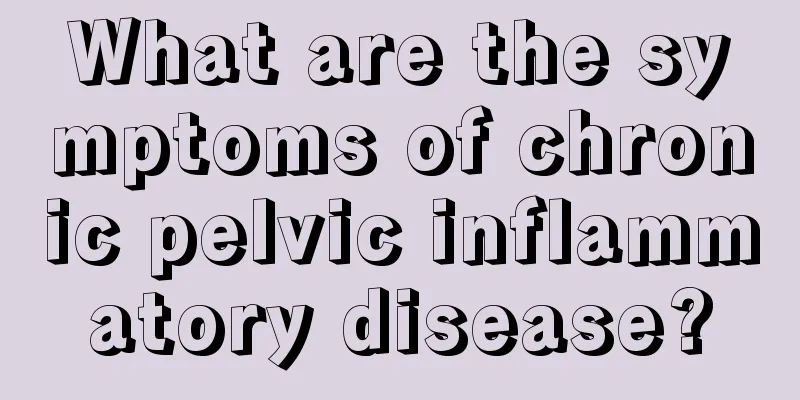What are the symptoms of chronic pelvic inflammatory disease?

|
Chronic pelvic inflammatory disease affects many women, and as a common gynecological disease, it can also have many impacts on women, causing pelvic congestion or lower abdominal distension, as well as symptoms of low back pain, and sometimes even irregular menstruation or infertility. 1. Symptoms (1) Chronic pelvic pain. Scar adhesions caused by chronic inflammation and pelvic congestion often cause lower abdominal distension, pain, and lumbar pain. It often worsens after fatigue, long periods of standing, sexual intercourse, and before and after menstruation. In severe cases, it will affect work. (2) Infertility and ectopic pregnancy Adhesion and obstruction of the fallopian tube can cause infertility and ectopic pregnancy. The incidence of infertility after acute pelvic inflammatory disease is 20% to 30%. And as the disease progresses, the infertility rate shows an upward trend. (3) Menstrual abnormalities Endometritis often presents with increased leucorrhea, irregular menstruation, heavy menstrual bleeding, dysmenorrhea, and sexual discomfort. Pelvic congestion can cause increased menstrual flow. Ovarian dysfunction can cause menstrual disorders. (4) Systemic symptoms are often not obvious, sometimes only a low-grade fever and fatigue. Due to the long course of the disease, some patients may experience symptoms of neurasthenia, such as lack of energy, general discomfort, insomnia, etc. When the patient's resistance is poor, acute or subacute attacks are likely to occur. 2. Physical signs General signs: the uterus is often retroverted, with limited movement or adhesions; or the fallopian tube is thickened and tender; or a cystic mass is palpable; or there is sheet-like thickening and tenderness beside the uterus, etc. (1) If it is endometritis, the uterus will be enlarged and tender. If it is salpingitis, the fallopian tube will be felt on one or both sides of the uterus, and it will be slightly tender. (2) If it is hydrosalpinx or tubo-ovarian cyst, a cystic mass will be felt on one or both sides of the pelvic cavity, and movement will be restricted. (3) If it is pelvic connective tissue inflammation, the uterus is often retroverted and flexed, with limited movement or adhesion fixation. There are patchy thickening and tenderness on one or both sides of the uterus. The uterosacral ligaments are often thickened, hardened, and tender. |
<<: The consequences of removing the uterus and ovaries are very serious.
>>: What fruits are good for calcium supplementation for pregnant women?
Recommend
Diet therapy for upper respiratory tract infection in pregnant women
In fact, pregnant women should pay great attentio...
Why does it smell a bit down there?
As a girl, you must dress yourself neatly and bea...
What is the treatment for mild cervical erosion?
Nowadays, many of our friends have been moving fa...
3 tips to get rid of the "phlegm" devil and keep your "lung baby" fresh
Author: Li Xin Shenzhen Longgang District Third P...
Causes of frequent urination in women
In daily life, you may observe that the female fr...
Can I use medicine to have an abortion if I am one month pregnant?
For young women, pregnancy is a very devastating ...
How many milligrams of calcium should pregnant women take per day
Pregnant women, as a special group, need a lot of...
Is it true that “left eye twitching brings disaster, right eye twitching brings fortune”?
This is the 4223rd article of Da Yi Xiao Hu Autho...
Why do pregnant women have filiform warts?
Filiform warts are a unique type of common warts,...
Does men's skin age faster than women's?
As the years go by, our skin starts to show the s...
What are the symptoms of blood in women's urine?
Blood in urine, as the name suggests, means that ...
Cancer prevention and treatment, medical protection guide丨From imatinib to daratumumab——a list of medical insurance targeted drugs for blood tumors
The 2018 movie "Dying to Survive" broug...
Does the rectus abdominis need to be repaired?
Rectus abdominis separation is also a postpartum ...
What is the best time to have an abortion?
In life, it is a very happy thing for young coupl...
Will the patch repair be discovered?
Some female friends still attach great importance...









